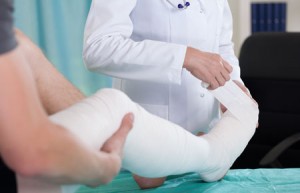
Who doesn’t want to make a mark in the world, to leave something behind that makes life better for someone else? Except sometimes, the best mark you can make is to leave behind nothing at all. That’s definitely the case when you’re making a difference by developing, manufacturing or using bioabsorbable implants.
If you’ve ever had an injury or surgical incision closed with dissolving stitches, you’ve personally experienced bioabsorbable polymers in action in a health-care application. The advantages are pretty impressive: healing occurs without the need for a doctor to remove a foreign body – the stitches – later on. And nothing gets left behind in the body except healthy, healed tissue. It’s not just a question of comfort and convenience either; surgical and medical implants made of bioabsorbable polymers can help patients avoid infection and pain, and aid health-care practitioners in achieving the best possible treatment outcomes.
Bioabsorbable implants are currently used in a number of health-care functions, including repairing fractures, soft-tissue fixation (such as ligament repair), and cardiac and renal applications (such as stents)[1]. Such implants support the gradual healing of bone, vessels and tissues, while avoiding the complications metal implants may present during post-operative radiographic evaluations. Eliminating the need to remove hardware after treatment allows patients to avoid painful secondary procedures that may also elevate the risk of infection. In cardiac applications, bioabsorbable stents can also deliver vital, time-released medications. And researchers are working on a biodegradable implant that can deliver drugs directly to an injured or diseased area of the body, such as chemotherapy medicine to a cancerous tumor.
Typically, alpha-polyesters or poly acids such as polylactic acid (PLA), polyglycolic acid (PGA) and polydioxanone (PDS) are used in creating bioabsorbable polymers[2], but research and development is on-going for new polymers that can be used in biomedical applications. To be effective in bioabsorbable implants, polymers must meet a number of criteria, including:
- Biocompatibility
- Molecular weight
- Mechanical strength
- Deliverability to the implant site
- A predictable degradation process and reabsorption rate in the body
While stability is a key objective in development and analysis of polymers in a variety of applications, from food packaging to lubrication, bioabsorbable polymers are designed to change throughout their life cycle. That change and eventual degradation needs to occur in a predictable, controlled way that will ultimately leave nothing behind in a patient’s body. Several monomer types are involved in the creation of biodegradable copolymers, so designing, developing and analyzing these materials can be a challenge.
Polymer Solutions relies on a variety of characterization and release testing methods to analyze resorbable polymers and copolymers. We can customize tests for viscosity, molecular weight, residual monomers or solvents, degradation and aging, and a host of other factors. Bioabsorbable polymer testing can help predict how well an implant made from a specific polymer will perform its intended role in a surgical application – so that after treatment is done, nothing remains but a healthier, happier patient.
